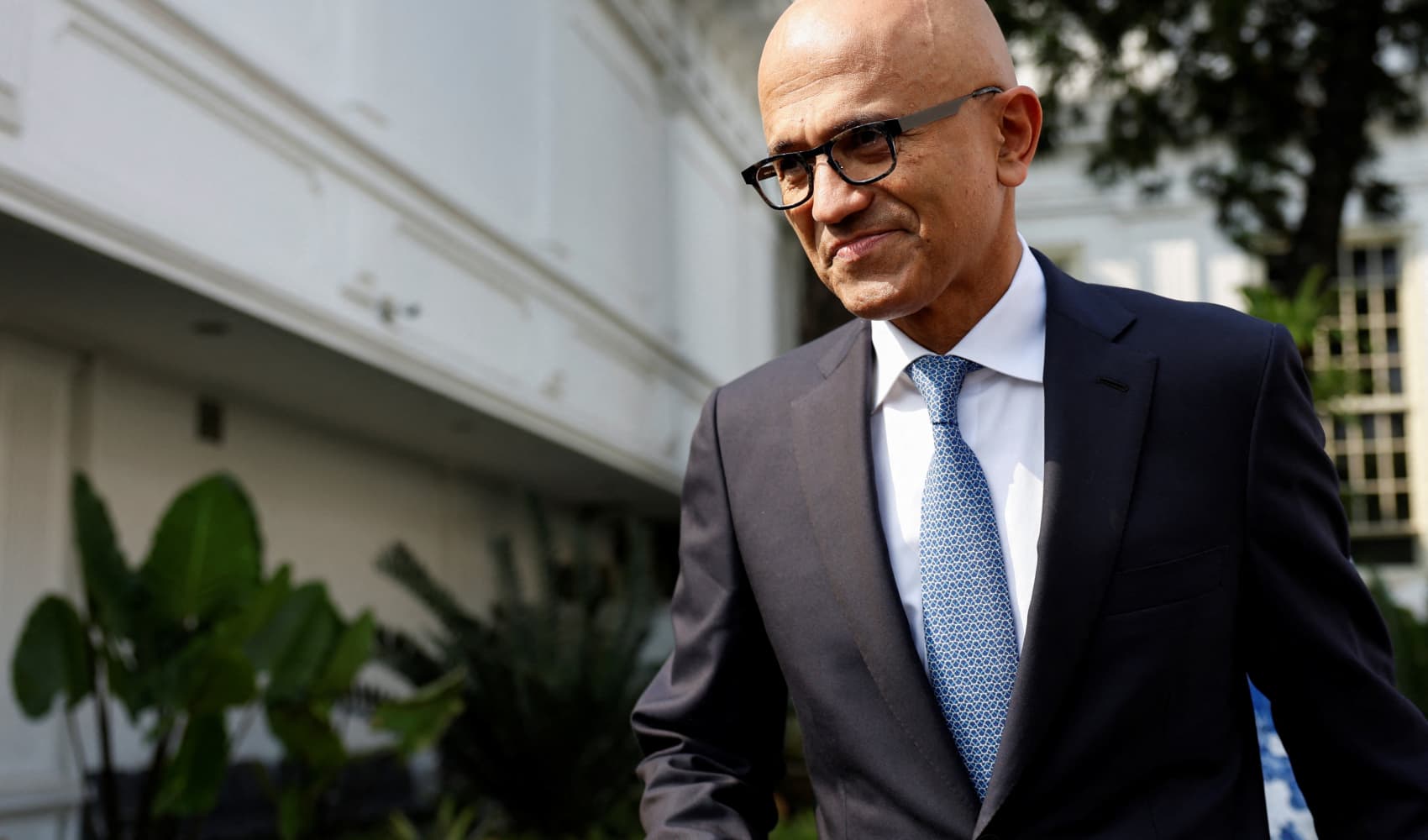Microsoft Layoffs 2024: What You Need to Know Now
Microsoft Announces Workforce Reduction: What Does it Mean?
Introduction: The Tech Giant Readjusts
The tech world is buzzing with news: Microsoft, a name synonymous with innovation and stability, is cutting 3% of its global workforce. That’s roughly 6,000 people affected. It’s a significant number, no matter how you slice it. But what does this mean for Microsoft, its employees, and the tech industry as a whole? Is this a sign of trouble, or a strategic realignment? Let's dive in.
Scale of the Layoffs: A Deep Dive into the Numbers
Microsoft, a behemoth in the tech industry, employed a staggering 228,000 individuals worldwide as of last June. So, cutting 3% might seem like a drop in the bucket, right? Think again. 6,000 jobs is no small matter, impacting families and communities. It’s important to remember that behind every percentage point, there are real people with real lives.
Where are the Cuts Happening?
The announcement indicates that the layoffs will affect all levels, teams, and geographies. This suggests a broad restructuring rather than a targeted downsizing of a specific division. Are they restructuring to be more agile? Perhaps focusing on new AI ventures?
The Official Statement: Reading Between the Lines
“We continue to implement organizational changes necessary to best position the company for success in a dynamic marketplace,” a Microsoft spokesperson stated. Standard corporate speak, wouldn't you agree? But let's unpack it. "Dynamic marketplace" likely refers to increased competition, evolving technologies, and shifting consumer demands. This hints at a need for Microsoft to adapt and innovate faster.
Financial Performance: A Contradictory Picture?
Here's where things get interesting. Microsoft reported better-than-expected results, boasting $25.8 billion in quarterly net income and an optimistic forecast just recently. So, if the company is doing so well, why the layoffs? Is this a case of "trimming the fat" for even greater profits? Or is there more to the story?
Profitability vs. Efficiency: A Balancing Act
Companies often make tough decisions, even when profitable, to improve efficiency and future-proof their operations. Think of it like pruning a rose bush: sometimes you have to cut away healthy branches to encourage even more vibrant growth.
Past Layoffs: A Historical Perspective
This isn't Microsoft's first rodeo when it comes to layoffs. It’s likely the largest round of job cuts since the elimination of 10,000 roles in 2023. And earlier in 2023, they announced a smaller round of performance-based layoffs. What do these recurring events tell us about Microsoft's long-term strategy?
Learning from the Past: What History Teaches Us
Analyzing past layoffs can offer insights into the company's evolving priorities and its approach to managing its workforce. Did previous restructurings lead to increased innovation or improved profitability?
Management Layers: Streamlining for Speed
The announcement specifically mentions aiming to reduce management layers. This suggests a desire to flatten the organizational structure, empowering employees and speeding up decision-making. Could this be Microsoft’s attempt to become more agile and responsive to market changes?
The Impact on Innovation: More Agile or Less Creative?
A flatter structure can foster greater collaboration and innovation, but it can also lead to increased workloads and potential burnout for those remaining. It's a delicate balance.
The AI Factor: Pivoting Towards the Future?
With the explosion of AI, is Microsoft reallocating resources to focus on this cutting-edge technology? Are they shifting manpower from less profitable sectors to the AI race? Almost certainly. They are heavily invested in OpenAI and the integration of AI into its existing products.
Investing in AI: A Strategic Imperative
Companies that fail to embrace AI risk becoming obsolete. Microsoft clearly understands this and is making strategic investments to stay ahead of the curve. It's like betting on the winning horse in a race.
Impact on Employees: More Than Just Numbers
Let’s not forget the human element. These layoffs will undoubtedly have a significant impact on the affected employees and their families. Job loss is a stressful and disruptive experience. What kind of support and resources is Microsoft providing to those affected?
Providing Support: A Responsibility to Employees
Responsible companies offer severance packages, career counseling, and other forms of support to help affected employees transition to new opportunities. It’s not just about cutting costs; it’s about treating people with dignity and respect.
The Broader Tech Industry: A Ripple Effect
Microsoft’s layoffs could have a ripple effect throughout the tech industry. Are other tech giants facing similar pressures? Could this be the beginning of a broader industry slowdown?
A Bellwether for the Industry?
Microsoft is a major player in the tech world, and its actions are often seen as a signal of broader trends. Its workforce reduction could prompt other companies to re-evaluate their staffing levels and strategies.
Expert Opinions: What the Analysts are Saying
Industry analysts are closely watching Microsoft's move. Some believe it's a necessary adjustment to remain competitive, while others worry about the potential impact on innovation and employee morale. What's the consensus among the experts?
Contrasting Perspectives: Weighing the Pros and Cons
Analysts often have differing opinions, reflecting the complexity of the situation. It's important to consider a variety of perspectives to gain a comprehensive understanding of the issue.
The Future of Microsoft: Adapting to Change
Ultimately, Microsoft's success hinges on its ability to adapt to change and innovate. Will this workforce reduction help or hinder its efforts? Only time will tell.
Staying Ahead of the Curve: A Constant Challenge
The tech industry is constantly evolving, and companies must be agile and responsive to stay ahead of the curve. Microsoft's recent moves suggest a commitment to embracing change, even if it means making difficult decisions.
Long-Term Strategy: The Big Picture
These layoffs are likely part of a larger, long-term strategic plan. Microsoft probably aims to streamline operations, focus on key growth areas, and maintain its competitive edge in the ever-evolving tech landscape. Is Microsoft focusing on cloud computing, AI, or other emerging technologies?
Strategic Alignment: Connecting the Dots
Understanding the underlying strategic goals can provide valuable context for interpreting the workforce reduction. It's about seeing the forest for the trees.
Conclusion: A Necessary Evil or a Strategic Blunder?
Microsoft’s decision to cut 3% of its workforce is a complex issue with potentially far-reaching consequences. While the company cites the need to adapt to a "dynamic marketplace," the layoffs will undoubtedly impact employees, communities, and the broader tech industry. Whether this move proves to be a strategic masterstroke or a misstep remains to be seen. Ultimately, Microsoft's success will depend on how it supports its employees and navigates the ever-changing tech landscape.
Frequently Asked Questions
Here are some frequently asked questions about Microsoft's workforce reduction:
- Q: Why is Microsoft laying off employees despite strong financial results?
A: Microsoft is likely streamlining operations and reallocating resources to focus on key growth areas like AI and cloud computing, even with good financial results. This helps them stay competitive in a rapidly evolving market.
- Q: What support is Microsoft providing to affected employees?
A: While details vary, it's expected that Microsoft will offer severance packages, career counseling, and other resources to help employees transition to new opportunities. Check official Microsoft resources for accurate information.
- Q: Will these layoffs affect Microsoft products and services?
A: It's difficult to predict the exact impact, but Microsoft will likely prioritize its core products and services. There might be some minor disruptions in certain areas as the company adjusts to the new structure.
- Q: Are other tech companies planning similar layoffs?
A: The tech industry is facing economic headwinds, so other companies might be considering similar measures. Microsoft's actions could be a sign of a broader trend.
- Q: How can I find out if I'm affected by the layoffs?
A: Microsoft should be directly communicating with affected employees. If you are concerned, contact your manager or HR department for more information.



